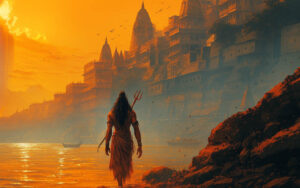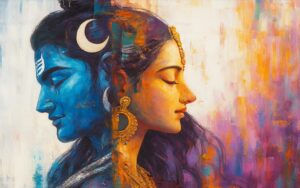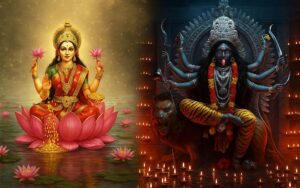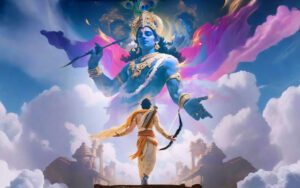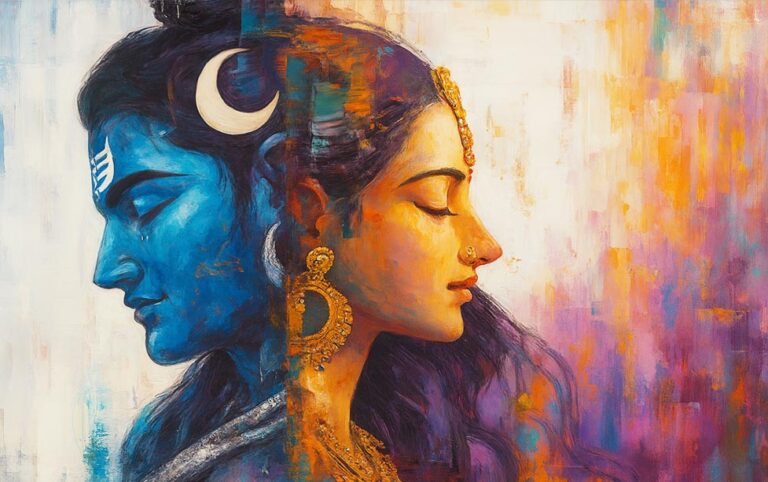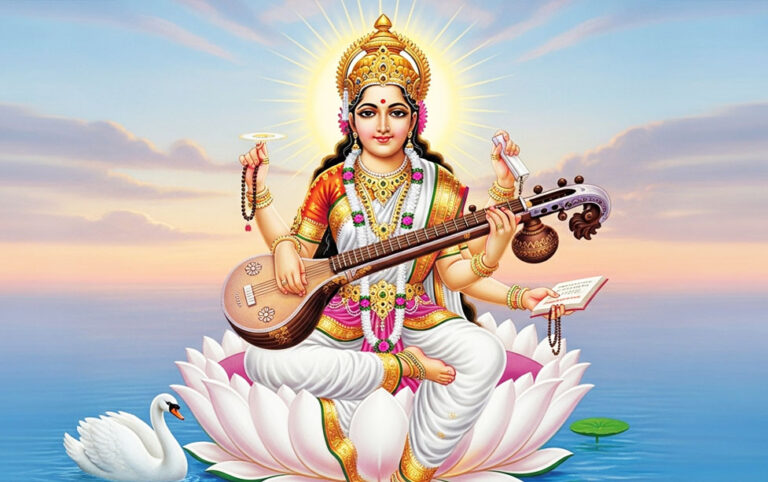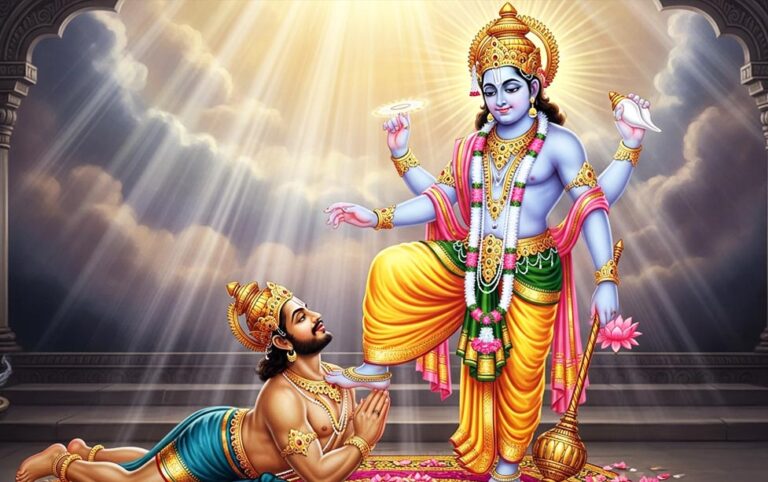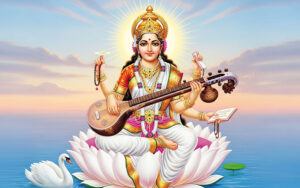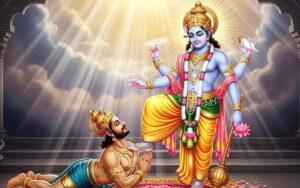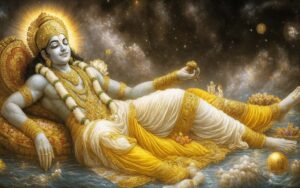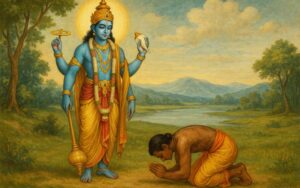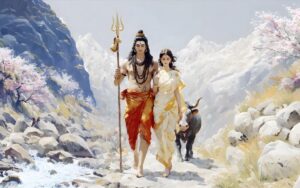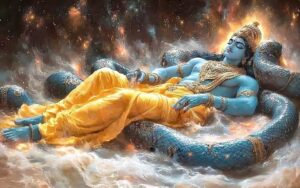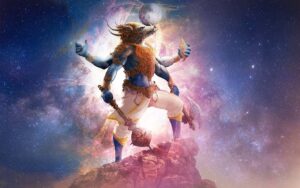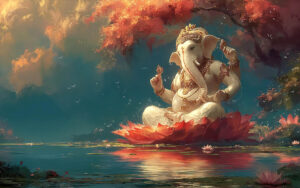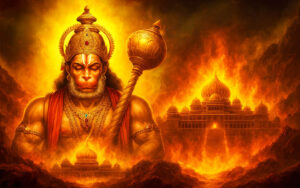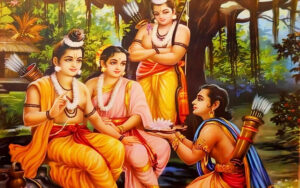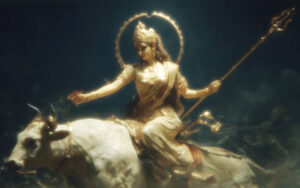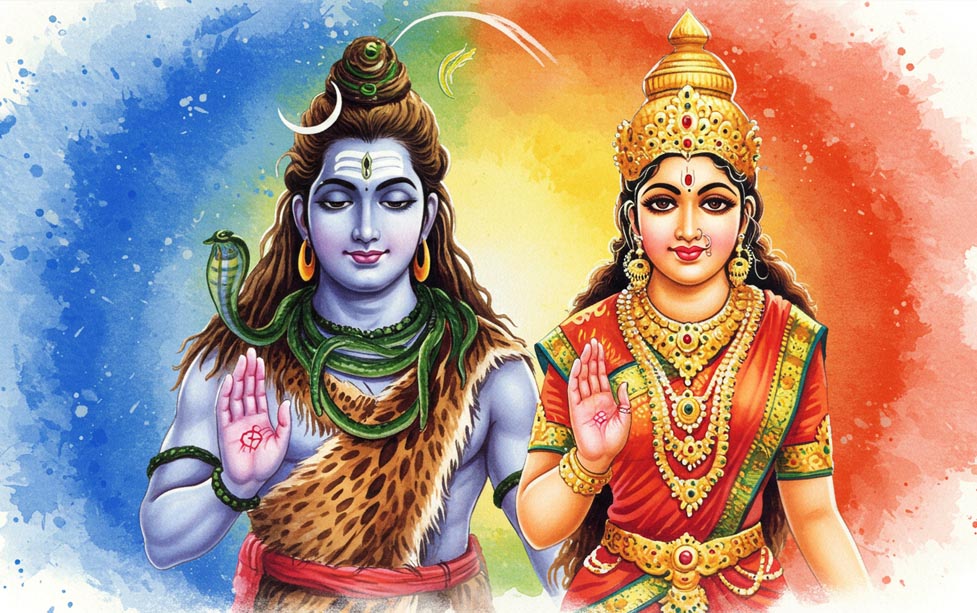
No time for reading the blog? Give it a listen on Spotify in English and Hindi.

The love of Shiva and Parvati is a timeless story of devotion, balance, and unity, teaching us the power of harmony and transformation.
In the heart of Hindu divine tapestry lies a love story that transcends time and space—the eternal bond between Lord Shiva, the ascetic destroyer, and Goddess Parvati, the embodiment of grace and devotion. Their union is not merely a romantic tale but a profound allegory of cosmic balance, spiritual awakening, and the harmonious interplay of opposites. Let us delve into the essence of their divine love, their journey to union, and the timeless lessons it imparts.
The Essence of Shiva and Parvati: Opposites in Harmony
Shiva, the Mahayogi, represents transcendence, detachment, and the raw power of consciousness. He dwells in meditative solitude, adorned with ashes and serpents, his third eye ablaze with the fire of wisdom. Parvati, known as Shakti (divine feminine energy), embodies creativity, nurturing love, and the force that animates the universe. She is the daughter of the Himalayas, a goddess of compassion and determination.
Together, they symbolize the union of Purusha (consciousness) and Prakriti (nature), illustrating that creation cannot exist without the merging of stillness and movement, austerity and warmth. Their love is the cosmic dance where opposites coalesce into oneness.
The Journey to Union: A Test of Devotion
Parvati’s love for Shiva was forged in the fires of rebirth and resilience. In her previous life as Sati, she immolated herself when her father Daksha insulted Shiva. Reborn as Parvati, she resolved to win Shiva’s heart again, not through fleeting desire but through unwavering tapasya (spiritual austerities).
For years, Parvati meditated in the Himalayas, enduring harsh seasons and rejecting worldly comforts. Her penance moved Shiva, but he tested her resolve. Disguised as a sage, he criticized Shiva’s wild appearance and erratic ways. Parvati fiercely defended her beloved, proving her love was rooted in profound understanding, not infatuation.
This moment shattered Shiva’s detachment. His heart, frozen in grief since Sati’s death, melted at Parvati’s steadfast devotion. Their union was sealed in a celestial wedding, witnessed by gods and sages, marking the convergence of asceticism and householder life.
Beyond Romance: The Cosmic Play of Shiva and Parvati
Their relationship is a beautiful blend of playful energy and deep cosmic duty. In one tale, Parvati playfully covers Shiva’s eyes, plunging the universe into darkness. From this emerged Andhaka, a demon, teaching that even divine play has consequences. Yet their bond always restores balance—Shiva as the destroyer, Parvati as the nourisher.
As Ardhanarishvara, the half-male, half-female form, they embody inseparable unity. This metaphor reminds us that duality is an illusion; true harmony lies in embracing both masculine and feminine energies within.
Their children, Ganesha and Kartikeya, further enrich their narrative. When Parvati created Ganesha from her divine essence, Shiva’s initial misunderstanding (beheading the boy) and subsequent restoration (granting him an elephant head) reflect the complexities of familial love and forgiveness.
The Spiritual Significance: Love as Liberation
Shiva and Parvati’s love transcends earthly romance. It symbolizes the soul’s yearning for the Divine—a call to move beyond superficial attachments and seek union with the eternal. Parvati’s devotion mirrors the path of bhakti (devotion), while Shiva’s grace represents the ultimate reward of spiritual practice: merging with the Absolute.
Divine Avatars: Earthly Reflections of Inseparable Unity
The love of Shiva and Parvati is not confined to celestial realms; it reverberates across the Earth through the avatars they embody together, affirming their eternal togetherness. In the Kiratarjuniya episode of the Mahabharata, Shiva takes the form of a tribal hunter (Kirata) and Parvati becomes his devoted wife (Kirati), testing Arjuna’s valor and humility. Even in this mortal guise, their bond remains unbroken, teaching that divinity often dwells in humble forms.
Similarly, regional folklore and temple legends across India celebrate their joint incarnations—as wandering ascetics, village healers, or celestial guides—always side by side, blessing devotees who recognize their unity. These earthly manifestations remind us that their love is a living force, weaving through the fabric of existence. Just as rivers merge into the ocean, Shiva and Parvati’s avatars dissolve the illusion of separation, proving that their union is the heartbeat of creation itself—a sacred promise that wherever Shiva roams, Parvati walks beside him, and where her grace flows, his consciousness awakens.
Together, they are the divine template for love’s power to transcend form, time, and space.
A Love That Moves the Universe
The divine bond of Shiva and Parvati teaches us that true love is alchemy. It transforms solitude into companionship, asceticism into compassion, and individual longing into universal harmony. Their union is a reminder that in embracing both our shadow and light—our inner Shiva and Parvati—we find wholeness.
In a world often divided by duality, their story whispers: Love is not about possession, but partnership. It is the silent pulse behind the cosmos, the dance that turns chaos into creation. And in that dance, we too find our place—awakened, balanced, and eternally united.
Om Namah Shivaya. Om Shakti.


